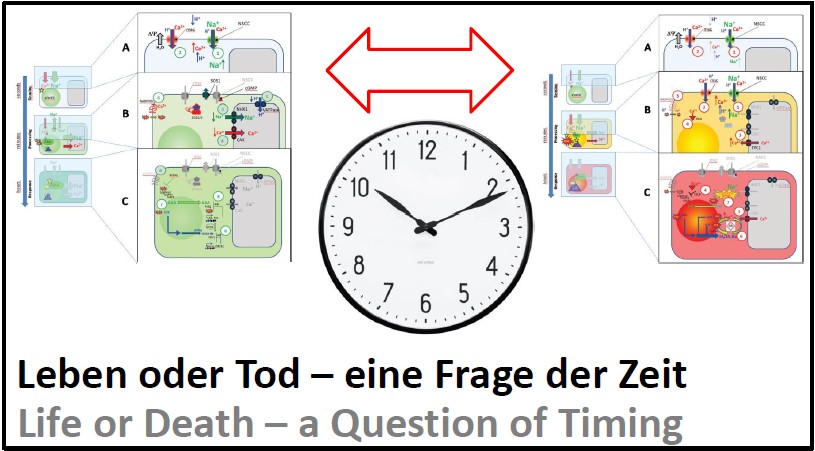05 Life or Death under Salt Stress - It Is All About Timing
 |
Life or Death under Salt Stress - It Is All About Timing
[35] Ismail A, Takeda S, Nick P (2014) Life and death under salt stress: same players, different timing? J Exp Bot 65, 2963-2979. pdf 123 quotations. pdf
What is it about? When leaves or roots of plants are exposed to stress, they have two options – either, the cells try to adapt and stay alive, what costs a lot of energy of course. However, sometimes this strategy is not meaningful, and it is more efficient, when the cells sacrifice themselves for the sake of the whole plant. In a dry and hot summer one can often observe, how leaves turn brown and fall off. This death is not a chaotic surrender to the conditions, but an “ordered retreat”. The cells mobilise their resources of energy and protein and the plant transfers those into the stem or the roots. When the stress episode is over, these resources allow to form new leaves. The decision about the best strategy is rendered by means of the plant stress hormone jasmonic acid. What came out? This work was inspired by own observations, but also data from others. Using the important stress factor soil salinity we develop a hypothesis, how the decision might work and support this idea with extensive experimental evidence. The core element of our idea is the timing of the process. When the stress signal (jasmonic acid) is produced swiftly, but also swiftly dissipates, the cell will try to adapt to salt stress. When the stress signal is generated sluggishly, but remains high, this represents a signal for programmed cell death and the cell gives its life for the life of the entire plant. To explain, how a cell can distinguish such a complex thing as a temporal pattern, is far from trivial – but even for that we can offer plausible molecular explanations and propose strategies, how our bold idea that plants can sense temporal patterns of jasmonic acid, can be tested experimentally. By the way, we, humans, follow the same rules – short, but transient activation of stress hormones help us to overcome adverse conditions (“stress”). However, when the level of these stress hormones remains chronically elevated, we turn ill, a phenomenon that is often known under the name of burnout.
|
